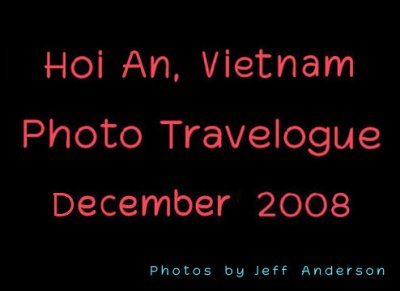
Hoi An, Vietnam cover page. |

Map of Vietnam with the star indicating Hoi An. |
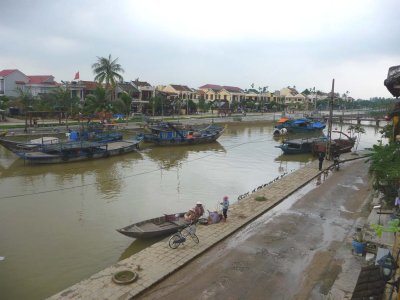
Hoi An is a harbor town located at the estuary of the Thu Bon River. |
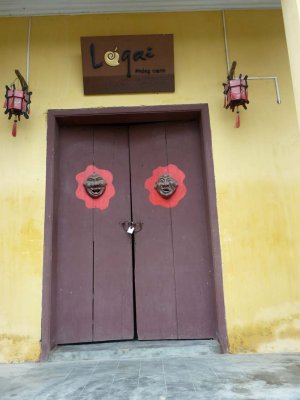
Hoi An doorway with interesting masks and lanterns. |
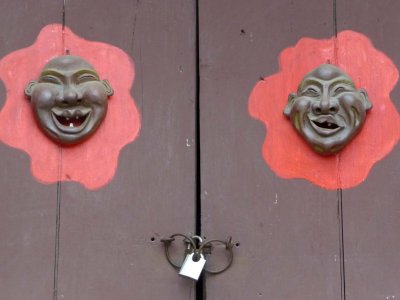
Close-up of the masks. |
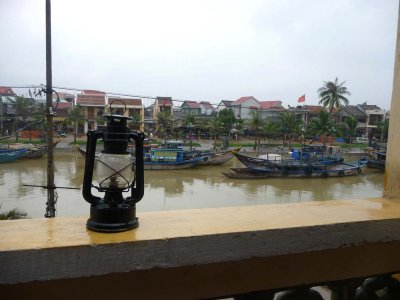
View from the restaurant where I had lunch in Hoi An of the Thu Bon River. |
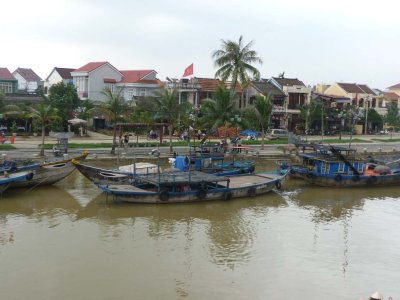
Another view of the river from the restaurant. |
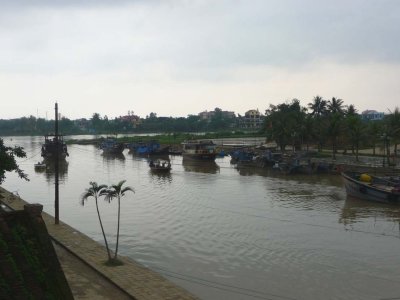
A bucolic scene looking down the river. |
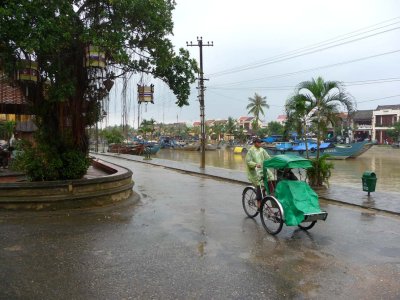
A bicycle rickshaw driver protecting himself from the rain on Bach Dang Street in Hoi An. |
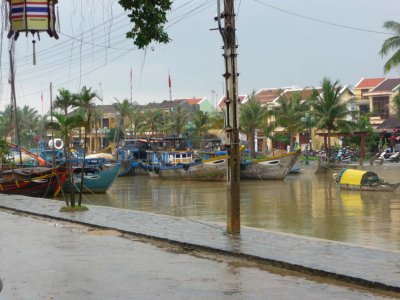
Wooden boats moored on the Thu Bon River. |
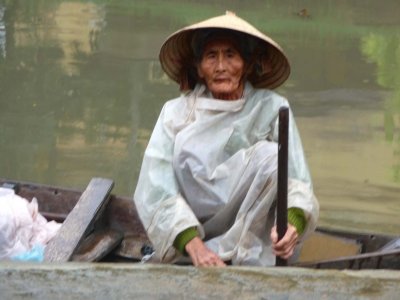
A craggy-faced old woman with rain gear in a rowboat. |
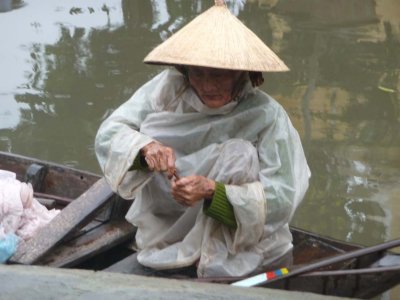
The old woman is doing something with her hands. |
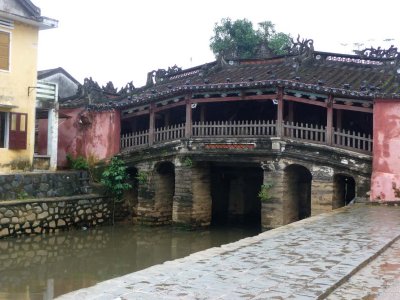
The Japanese Covered Bridge connects Tran Phu Street and Nguyen Thi Minh Khai Street. |
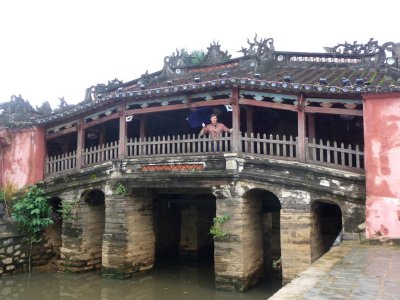
Me standing on the Japanese Covered Bridge. It was built in the 16th century by Japanese merchants. |
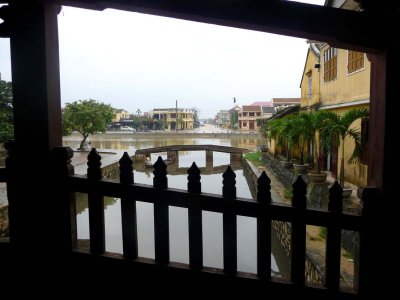
View from where I was standing on the Japanese Covered Bridge. |
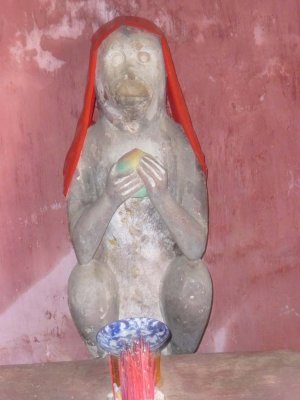
A monkey idol on the Japanese Covered Bridge of Hoi An. |
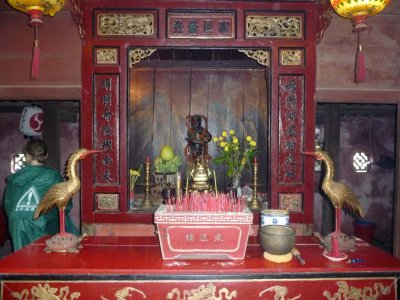
A small Buddhist shrine with incense offerings on the Japanese Covered Bridge. |

The ground floor of the historic Phung Hung Merchant House located near the Japanese Covered Bridge. |
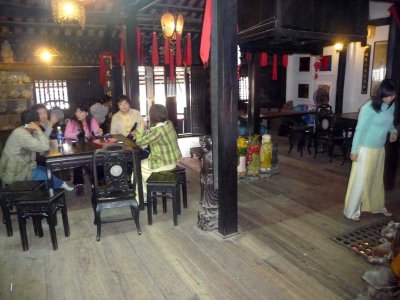
The 2nd floor of the Phung Hung Merchant House. The house has been home to the same family for 8 generations. |
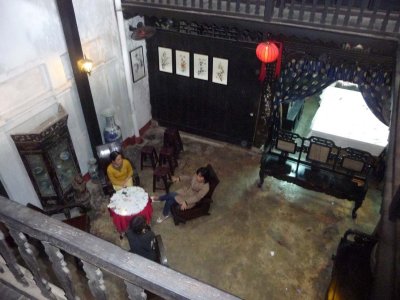
Looking down from the 2nd floor balcony. The house is built in the Vietnamese style with Japanese and Chinese influences. |
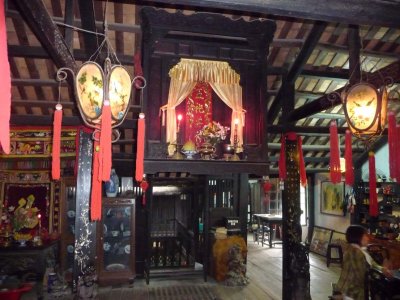
Suspended from the ceiling is a shrine to the ancestors as well as the protector deity, Thien Hau. |
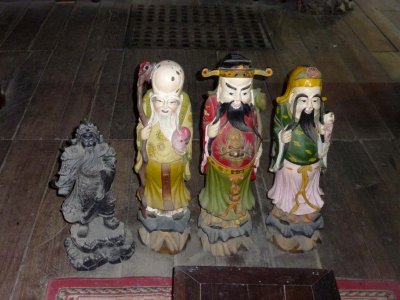
Ancient looking wooden statues in the Phung Hung Merchant House. |
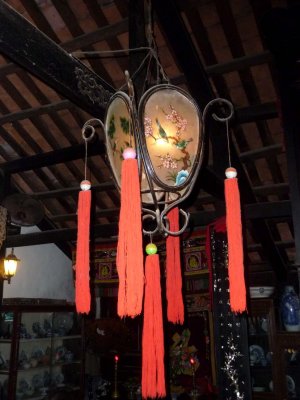
A traditional Vietnamese lantern hanging in the Phung Hung Merchant House. |

I got a photo of this toothless Vietnamese woman outside of the Phung Hung Merchant House. I had to tip her to get the picture. |
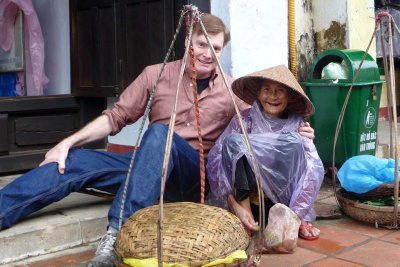
Me posing with my new girl friend. She was tiny! |
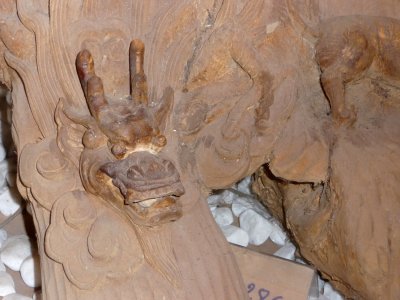
Monkey-face carving in a sandalwood carving and incense shop I went into in Hoi An. |
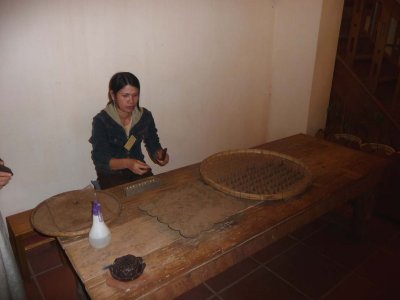
This woman was making sandalwood incense sticks. |
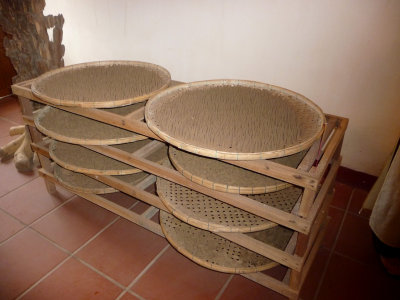
The sandalwood incense sticks ready to be sold. |
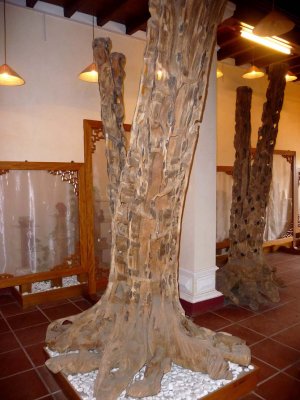
A sandalwood tree trunk ready to be carved in the shop. |
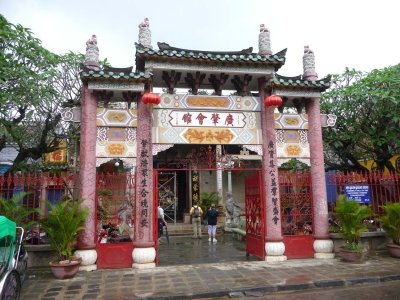
Entrance to the Assembly Hall of the Cantonese Chinese Congregation on Tran Phu St. in Hoi An. |
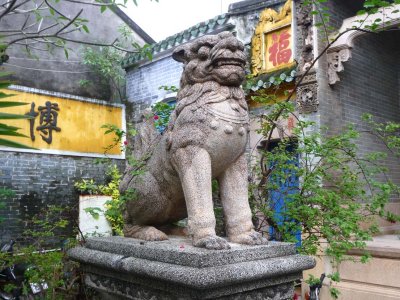
A stone guardian protecting the Cantonese Assembly Hall. |
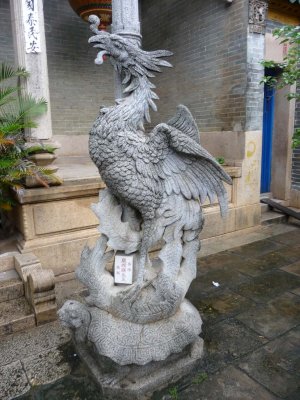
A mythical looking bird and tortoise carving at the Cantonese Assembly Hall. |
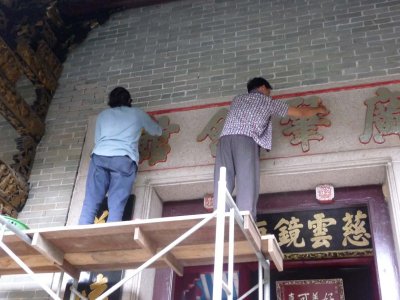
Work was being done on the Chinese letters. This Assembly Hall was built by Cantonese merchants in 1885. |
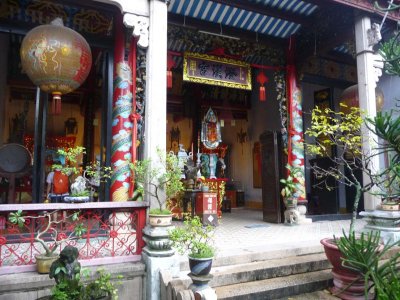
Parts of the building were made in China and transferred to Hoi An. |
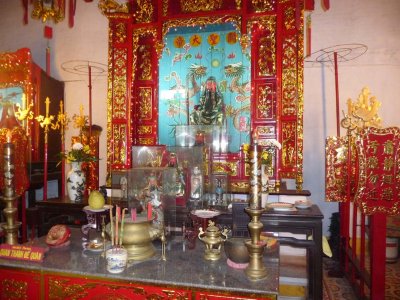
A Cantonese shrine at the Assembly Hall. |
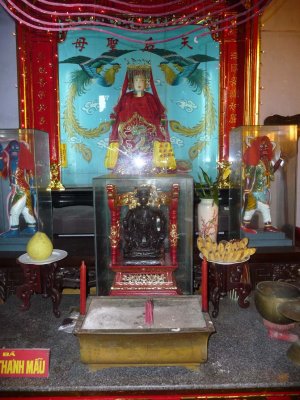
Details of the shrine. The fruit is probably an offering. |
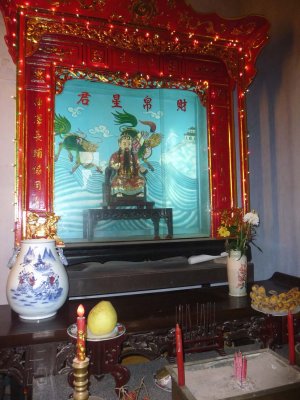
This Cantonese statue is also part of the shrine. |
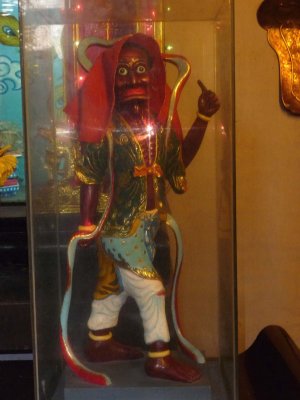
Interesting Cantonese wooden statue protected in plexiglas. |
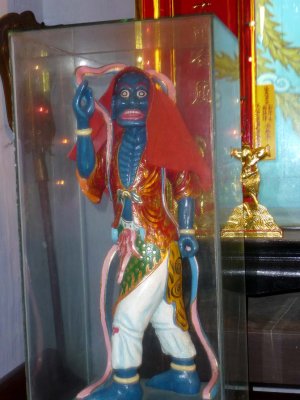
Some of these statues reflect the musical dramas of Cantonese culture. |
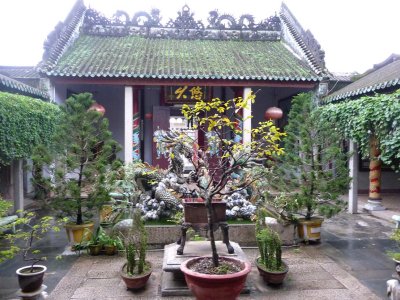
The Assembly Hall has an amazing fountain that features a dragon. |
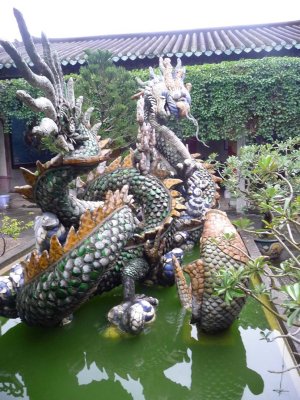
The dragon is a beautiful creation made out of pottery. |
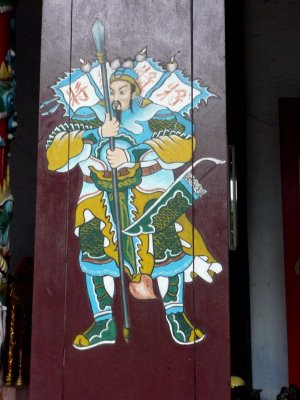
I noticed this Chinese warrior by the entrance as I was getting ready to leave. |
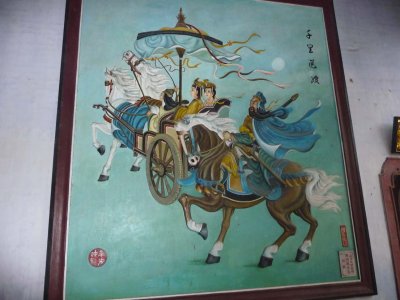
This beautiful and ethereal painting was hanging by the entrance of the Cantonese Assembly Hall. |
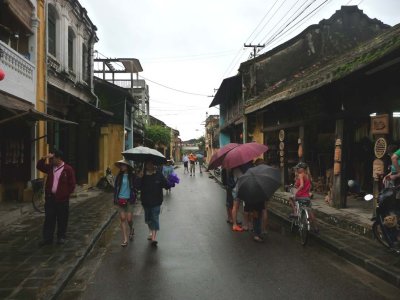
View of a rainy Tran Phu Street in Hoi An. |
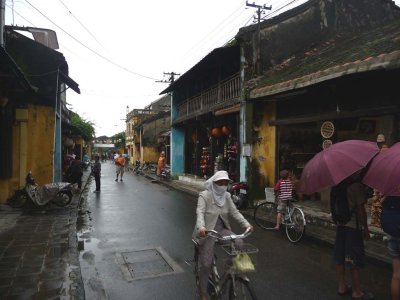
There are many shops and markets there. It is very touristy. |
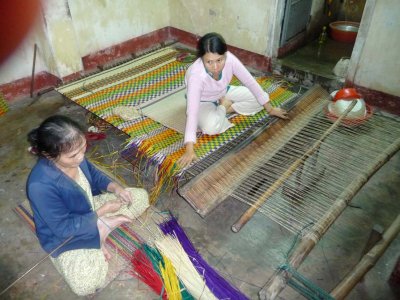
My next stop was at a silkworm breeding factory and tailor shop on Le Loi Street. |
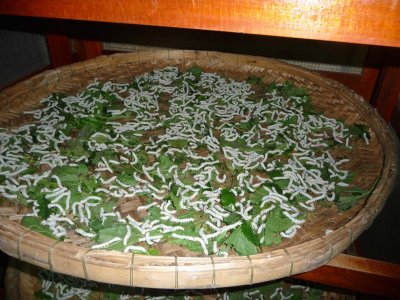
The silkworms breeding. I was given the standard tour with the ultimate intention to sell me something! |
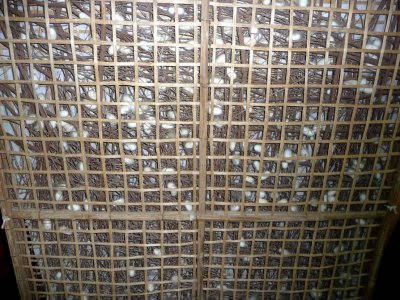
Here you can see the cocoons of the silkworms from which the silk is extracted. |
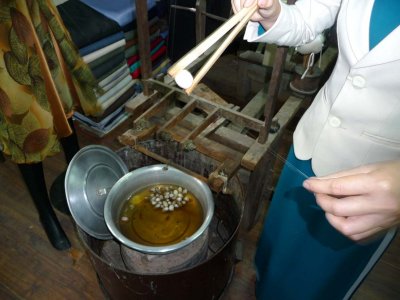
In this process, the silk is being extracted. The sales pitch worked, I wound up buying two custom-made shirts there! |
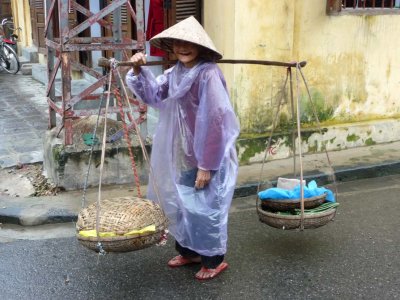
For the second time that day, I ran into the toothless woman. She was posing again for tips. |
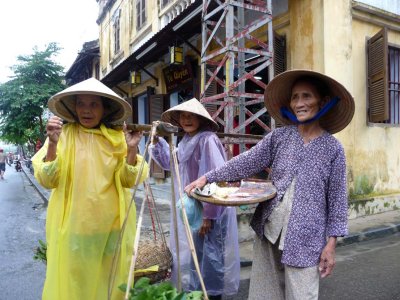
Her friends saw what a good thing the toothless women had going and got in on the picture taking (and tipping)! |
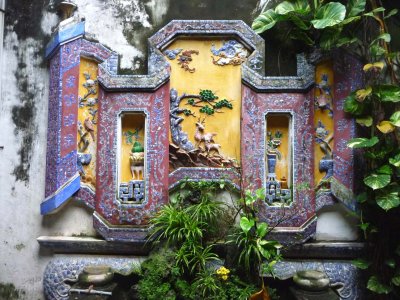
Next, I went to the Museum of Trading Ceramics in Hoi An and saw this amazing 3-dimensional ceramic wall artwork. |
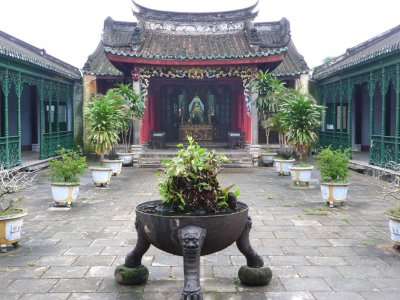
View of the Ngu Bang Hoi Quan (All Chinese) Assembly Hall. It was open to any Chinese trader or seaman, despite their ethnicity. |
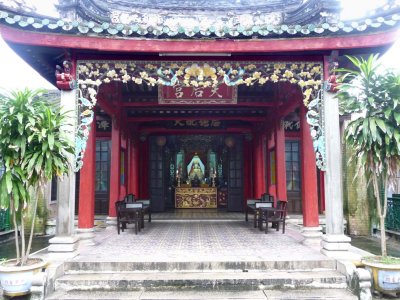
Closer view of the Ngu Bang Hoi Quan Assembly Hall. |
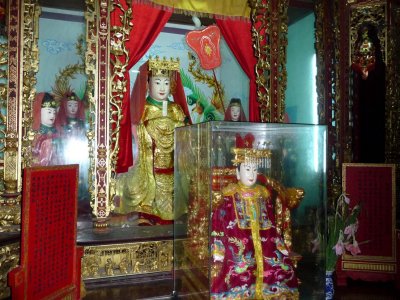
Beautiful ceramic figures are enshrined in the Ngu Bang Hoi Quan Assembly Hall. |
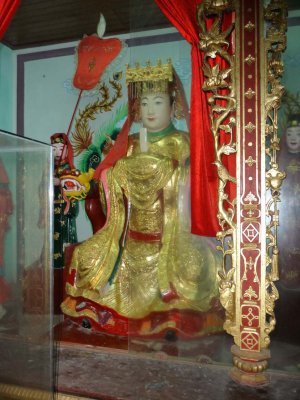
Close-up of one of the ceramic figures. |
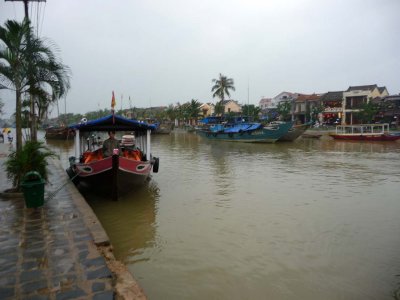
Nice view of the Thu Bon River in the afternoon. |
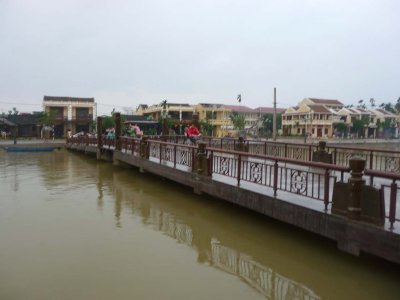
The Thu Bon River with pedestrians walking and biking across the bridge. |
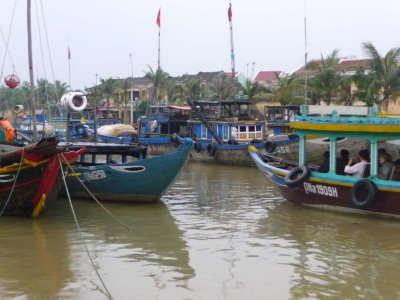
A mix of wooden tourist boats and fishing boats on the Thu Bon River. |
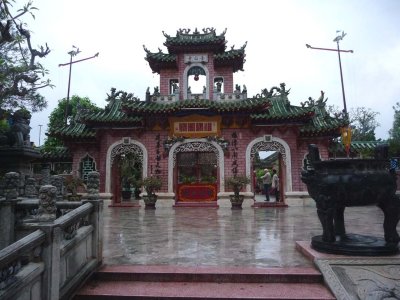
The Fukien Assembly Hall. Hoi An had a lot of maritime trade by the 1700s, thus, ethnic Chinese built numerous assembly halls. |
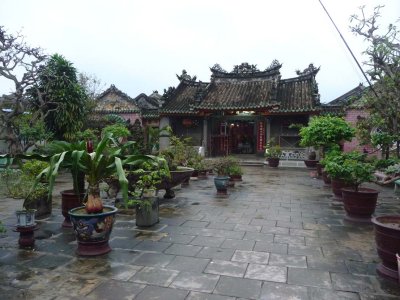
Potted plants decorate a patio garden inside the Fukien Assembly Hall compound at Hoi An. |
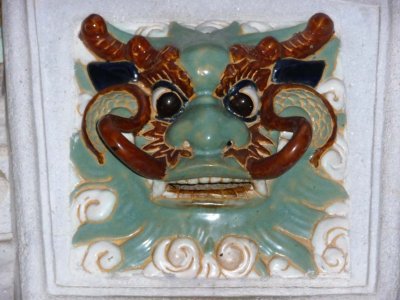
A ceramic face decorating the Fukien Assembly Hall. |
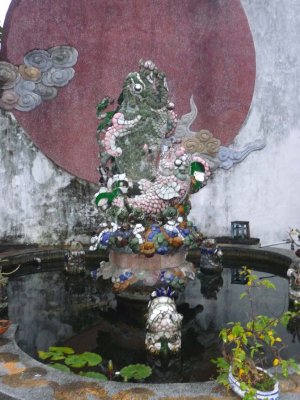
A ceramic fish sculpture in a pond in the Fukien Assembly Hall. |
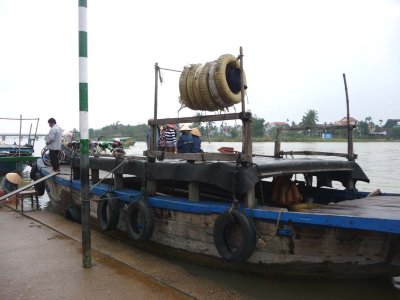
I walked down Bach Dang Street and passed by this boat with many rubber tires on it. |
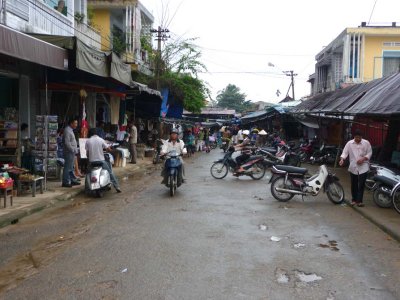
I was approaching the large open air market in Hoi An. |
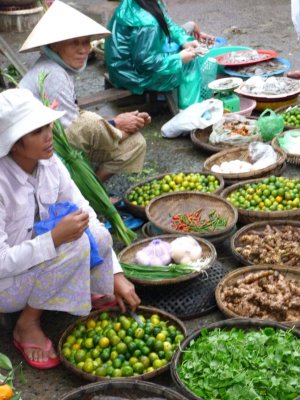
Hoi An women selling fruit and vegetables. |
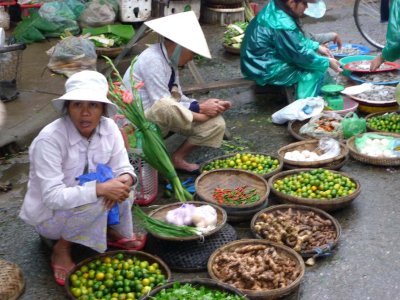
This women was looking for customers. |
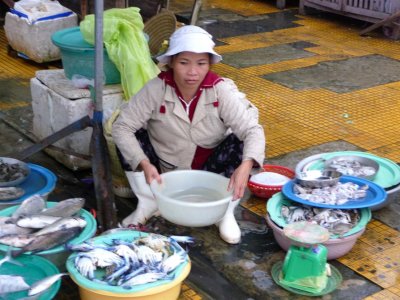
A Hoi An fish vendor. I tried the local catch, and it was delicious! |

These women were doing some washing in the Thu Bon River. |
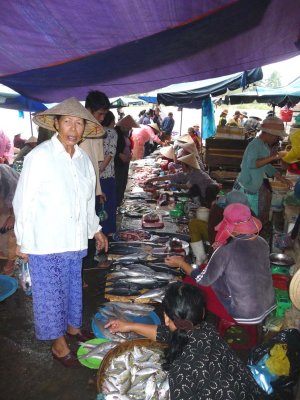
Some of the customers were very picky when buying fish. |
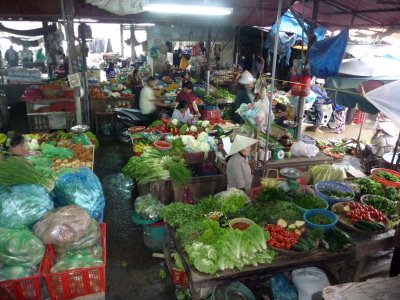
The fruit and vegetable market was very extensive. |
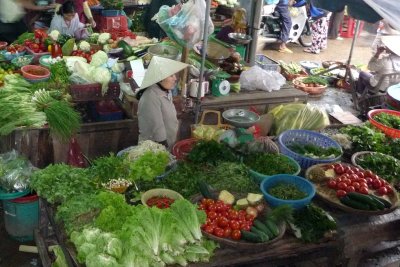
A vendor selling her vegetables. |
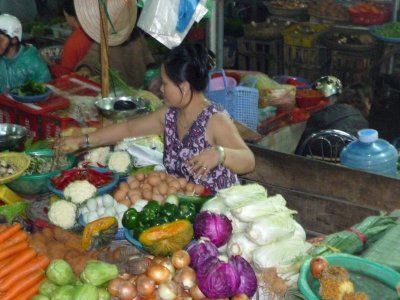
Close-up of another vendor selling eggs and vegetables. |
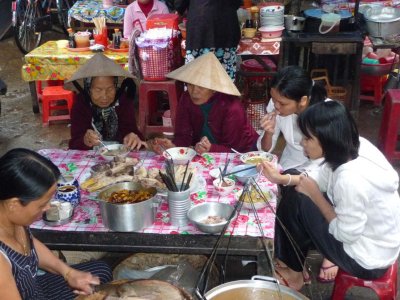
People eating at the open-air market since it was late in the afternoon and close to dinnertime. |
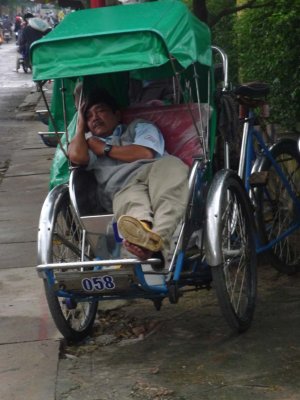
This cyclo driver was taking a late afternoon nap. That's how I felt after spending the day touring Hoi An! |











